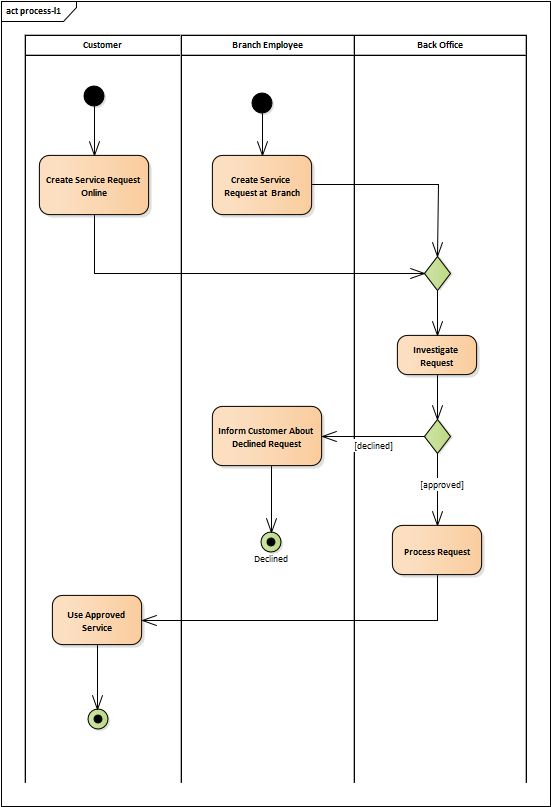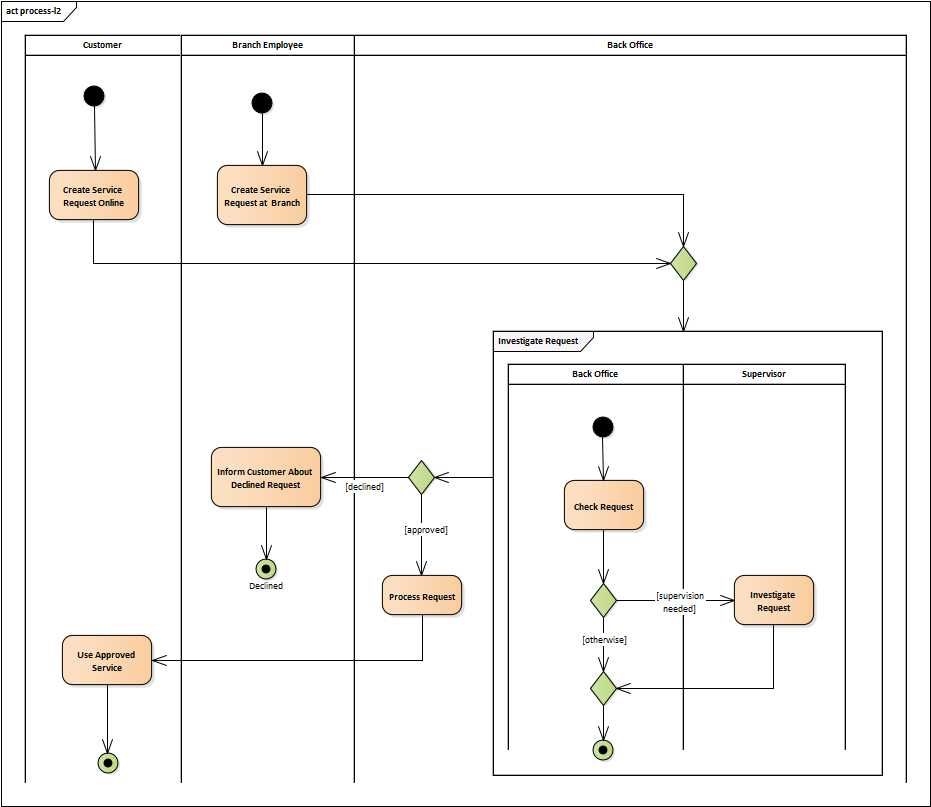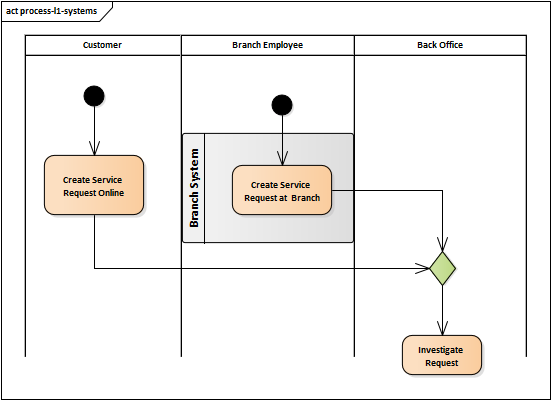Process
A process is a collection of activities that interact to produce a result. It could be described from various levels of detail and modeled using different forms. Theoretically, each process could be represented by a set of textual statements, each declaring who does what and in what order. However, the conventional way is using a process diagram:

Process Levels
The process depicted in the diagram above is the most high-level representation of the process, usually called Level 1 process (L1). It provides a concise high-level overview of the process which communicates the main activities and parties involved. Even though the L1 shows just the overview without going into detail, it is beneficial to have it as it enables readers to learn the process top-down, from general facts to more concrete details. This is very effective as it represents the natural way of how people process information. The human brain is not very good at processing complex problems, but could easily connect different levels of detail and then understand the whole. For this reason, processes are usually broken down into more detailed L2, L3, etc. sub-processes.

The previous diagram shows how the Investigate Request process step is broken down into its own L2 process diagram.
Please note, that including the L2 diagram in the L1 is used only to show them both in one picture, but this is not a recommended practice as it goes against the idea of making the diagrams concise.
Process Step Realizations
The process presented in this chapter meets all requirements for a business processes - it represents a manner in which work is organized and coordinated to produce a valuable product or service. If you look carefully at the diagram, you could realize, there is no IT system involved. It does not even say how the process steps are realized. For example, the step Inform Customer About Declined Request could be done manually by sending an email from Outlook, semi-automatically, when the user sends it out from the system by clicking a button or fully automatically by the system. The convenient way to indicate the task type is by an icon. Each process step could be realized by a human manually or manually with the assistance of software. Another option is automatically by the system without any user involvement:
- Manual Task
- Manual task type is used whenever an activity must be executed manually. It can be executed without any outside help or application (e.g., filling a paper form).

- User Task
- User task is a task performed by a user with the assistance of software

- Service Task
- Service task is a task executed solely by the system "in the background"

Especially when describing as-is processes, it is usually not sufficient to know just who performs the step, but it is also useful to indicate in which system it is performed. It introduces additional coupling between the process and the systems, but we still recommend this method very often as it adds another information dimension.


